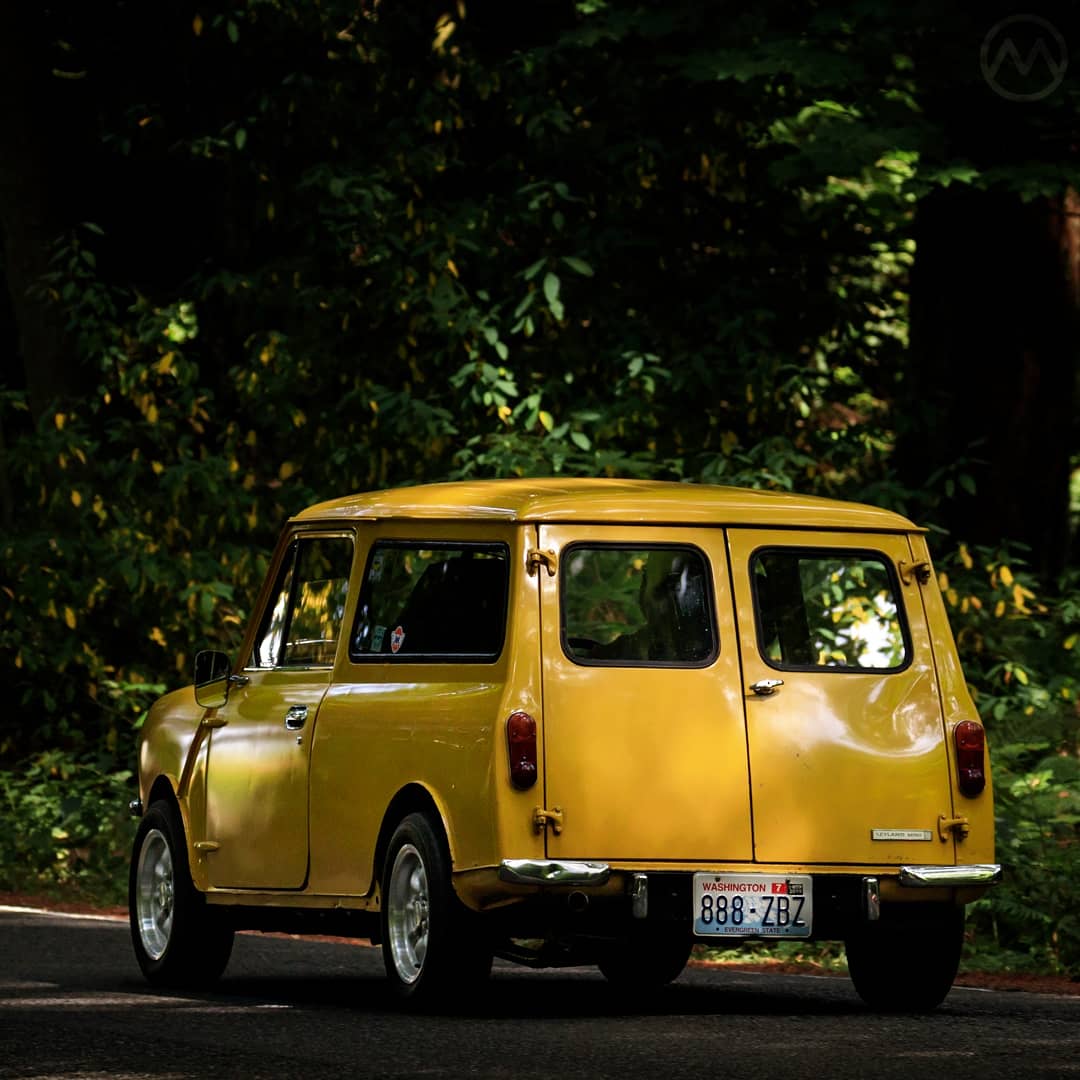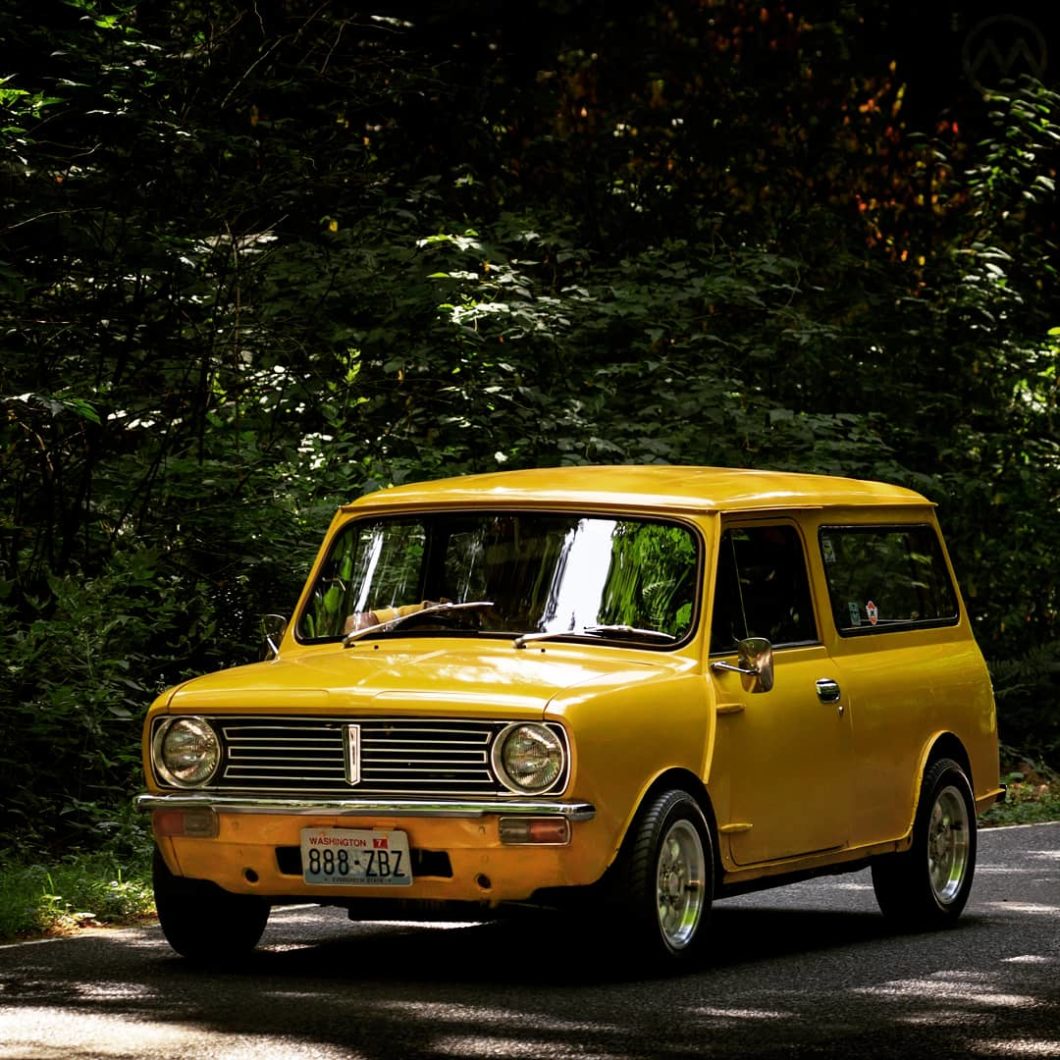Eagle-eyed British Leyland fans will also notice that this is not a Mini Clubman estate – although you can be forgiven for the assumption. In fact, it’s not an estate (er, wagon) at all but a Mini Clubman Van – built by British Leyland Motor Corporation of Australia at Zetland near Sydney. The windows were added later.
Australia proved a surprisingly robust market for the Mini, and local production began in 1961 – first in Complete Knock-Down (CKD) kit form. Full production local began in 1965 and the Minis built “down under” gradually began to diverge from the British versions. The Clubman Van ended up being a product unique to Australia and New Zealand as a result.
The rise and fall of the Mini in Australia followed the evolution of Nuffield, then BMC, then British Leyland’s local operations and local conditions as a whole, and the cars were made there until 1978.
British Cars in Australia
Both before and after WW2 Australians favored American cars – generally large and robust, but the being a commonwealth nation, it was also a good market for British products. After the war Americans were buying every American car that could be churned out by Detroit, which left an opening for even more British imports.
In 1949/50, four out of every five cars sold in Australia were from British brands, and some, like Austins, were assembled locally. The Nuffield Organisation (Then Morris, MG, Riley, and Wolseley) had set up a CKD assembly facility at Zetland (on the site of a former racetrack) in 1947. Austin had set up a local body-making assembly in Melbourne in 1949.
When the two companies merged into British Motor Corporation (BMC), a merger of their Australian subsidiaries followed and assembly ended up concentrated at Zetland (though not immediately).
Meanwhile, Australia’s own motor industry began to emerge – most prominently with the debut of the Holden 48-215 (sometimes called the Holden FX) in November, 1948. In an effort to bolster local production, the government enacted local content rules and hefty tariffs on fully-built imported cars. That spurred the transition from CKD assembly to actual full production – that resulted in many unique-to-Australia cars from a variety of manufacturers, particularly from BMC and Chrysler in the 1950s.
Holdens, Australia’s own cars and cars tailored specifically for the needs of Australian customers, were hugely popular almost from the start and were eventually joined by local Fords and Chryslers that were bigger than anything BMC had to offer.
To compete with them, BMC Australia first adapted existing British designs with larger engines – creating interesting products like the Morris Major and Austin Freeway. In these two cases, BMC Australia took a regular British design, lightly restyled it, and stuffed in the largest convenient powerplant. Like the regular larger British cars, they did okay but never could challenge Holden.
But one BMC car above all others proved to be counterintuitively popular in Australia – the Mini. Its popularity led to a major philosophical shift at BMC Australia.
The Mini Down Under
When you think of old Australian cars, big V8 Ford Falcons and Holden muscle cars probably come to mind. So it was perhaps a bit surprising that the Mini 850 proved an immediate hit in Australia. The Mini was popular enough to become the second-best selling car in Australia by 1963 and CKD production had begun in 1960.
With local content rules tightening in the 1960s, the company moved to full local production at Zetland in 1965. By 1970, the target for local content in each car was 85%.
The Mini’s popularity led BMC Australia to rethink what markets it targeted, and from 1966 to 1972, all of BMC and British Leyland’s products in Australia were front-drive Issigonis designs – including the ADO16 1100/1300 (later equippd with a 1500 and the ADO17 “Landcrab,” which did very well in urban areas where the majority of buyers were concentrated.
As the cost of tooling up for the front-drive cars was very high, the factory strove to keep costs down wherever they could. In 1967, when the British-built Minis got a raft of changes to create the Mk2 Mini, Australia didn’t implement the changes – having just invested in local tooling for local parts in 1965.
Those local parts were different in some cases. For example Australian Minis had roll-up windows with opening vent windows. British Minis didn’t get conventionally winding windows until 1969.
Of course, time marched on rather quickly at the end of the 1960s and the Mini looked its age in 1969-70. As the company became British Leyland Australia, it faced the same challenge with the Mini that the home office did – it needed an update. Fortunately Longbridge already had an answer, if not a perfect one.

In 1969, Roy Haynes’ facelifted Clubman brought a more modern face to the car and made it line up stylistically with the new Maxi (a vehicle not sold in Australia, but offered in New Zealand).
To keep the Mini current and black ink flowing, all Australian-built Minis got the Clubman front end for 1971. In the U.K., van and commercial versions of the Mini never really got the Clubman treatment – there didn’t seem to be any need to cater to those buyers with the Clubman. So the only place you could get such a van was in Australia and New Zealand.
Notably, from the A-pillar back, the Australian-built Minis still used Mk1 Mini bodies, which also saved on tooling costs.
Australian built Clubmans also got a performance version – the Clubman GT, which was closer to the outgoing Cooper S than the U.K.’s Mini 1275 GT, which also used the Clubman styling.
On the other front-drive ex-BMC models, even more extensive measures were taken to freshen them and extend the life of the investment. The 1800 was turned into the restyled Austin Tasman & Kimberly and the 1100/1300 was fitted with a 1.5L engine and sprouted a Maxi-like hatch as the Morris Nomad. The front-drivers were still mechanically sophisticated for their time, but they looked old on the outside even with these changes.
The Downfall of Leyland Australia
Cars built at Zetland were all relabeled “Leyland” after 1973, a choice made because of the popularity of Leyland Trucks in Australia, but one which had rather less relevance for car buyers. At the same time, as the fortunes of British Leyland sank at home the Australian subsidiary returned to the idea of taking on Holden head to head.
The first sign of that was the Leyland Marina Red Six, a 2.6L Marina that echoed the formula of the departed Austin Freeway, but the biggest project was the Leyland P76. This car would take on Holdens, Falcons, and Valiants directly, but it proved a very costly undertaking.
Worse still, Japanese manufacturers had arrived and British Leyland Australia was itself actually producing Japanese cars itself. BMC had purchased Pressed Metal Corporation (PMC) at Enfield in 1967, and this facility produced CKD Datsuns which sold in bigger numbers and at higher profits than the Austin-Morris cars, even when tariffs on CKD cars were taken into account.

The P76 was intended to be produced in Australia and South Africa, which would have made for okay economies of scale, but the South African portion of the project was abandoned.
As it happened, 1973 and 1974 would prove a disastrous time to introduced a big new car thanks to OPEC, and production was slow and troubled at the beginning, leading to quality ills. The P76’s failure had led to the closure of Zetland in 1974 and the car itself was history a year later.
British Leyland Australia continued, but in much downsized form. Minis were produced in CKD form at PMC until 1978 and Mini Mokes until 1982. The final Australian-built Mini was the Leyland Mini 1275LS, with production ending that October.
Minis, and other BMC/BL products like the Rover P6, were also built in New Zealand, at Newmarket, Petone, and Panmure. Curiously a much wider range of cars was available in NZ with many more imports rather than the streamlined lineup in Australia. Both Australia and New Zealand were commonwealth nations, but New Zealand had a much friendlier arrangement on tariffs from cars within the commonwealth.
This particular Clubman Van, with windows added probably in the 1970s to make it a more civilized “wagon,” was imported to the USA by Mark H., who’s part of the Seattle Area Mini Owners Association.

